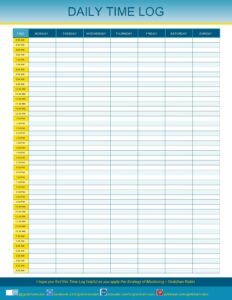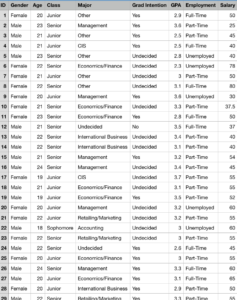Ever feel like your workdays blend into a blur, leaving you wondering where all your precious time went? It’s a common experience in today’s fast-paced professional world, where tasks pile up and distractions are plentiful. You start the week with the best intentions, a mental list of goals, and by Friday, you might be scratching your head trying to recall exactly what you accomplished. This isn’t just frustrating; it can impact your productivity, your ability to meet deadlines, and even your overall job satisfaction.
The good news is that there’s a simple yet incredibly powerful tool to help you regain control and clarity over your professional life: a weekly work activity log. This isn’t about micromanaging yourself to exhaustion; it’s about thoughtful self-awareness and strategic time allocation. By consistently tracking your activities, you gain invaluable insights into your work patterns, allowing you to optimize your efforts and demonstrate your contributions with solid data. Let’s dive into how a well-structured weekly work activity log template can transform your approach to work.
Why a Weekly Work Activity Log is Your New Best Friend
Embracing a weekly work activity log might seem like an extra chore at first, but it quickly reveals itself as an indispensable asset for anyone serious about professional growth and efficiency. Think of it as a detailed journal for your work life, offering a mirror to reflect your efforts and results. It moves you from a reactive approach to a proactive one, enabling you to make informed decisions about how you spend your most valuable resource: your time.
One of the primary benefits is the ability to identify time sinks. We all have those recurring tasks or unexpected interruptions that gobble up minutes, or even hours, without us fully realizing it. By logging your activities, you start to see patterns emerge. Are you spending too much time in unproductive meetings? Are certain colleagues consistently derailing your focus? A log provides the empirical evidence you need to address these issues head-on, whether by adjusting your schedule, setting boundaries, or delegating tasks more effectively.
Beyond identifying inefficiencies, a robust weekly work activity log is a potent tool for accountability and self-assessment. When you can clearly see the hours dedicated to specific projects, it becomes easier to assess your progress, celebrate achievements, and even justify your contributions during performance reviews. It helps you articulate your workload and highlight areas where you might need additional resources or support, transforming vague complaints into data-backed requests.
Key Benefits You’ll Notice
- Enhanced Productivity: Pinpoint exactly where your time goes and optimize your schedule.
- Better Time Management: Develop a clearer understanding of how long tasks truly take.
- Clearer Project Overview: Track progress on multiple projects simultaneously with ease.
- Improved Accountability: Demonstrate your contributions and manage expectations effectively.
- Easier Performance Reviews: Provide concrete examples of your work and achievements.
- Reduced Stress: Gain a sense of control over your workload and deadlines.
Moreover, a consistent log encourages a more strategic approach to your daily tasks. Instead of just ticking things off a list, you start to prioritize based on impact and deadlines, fostering a more mindful workflow. This mindful approach can significantly reduce the feeling of being overwhelmed, replacing it with a sense of purposeful direction and accomplishment. It’s about working smarter, not just harder.
For those working in roles that involve client billing or project-based work, the accuracy provided by a detailed log is indispensable. It ensures that every billable hour is captured and allocated correctly, preventing revenue loss and fostering trust with clients through transparent reporting. It’s a foundational element for accurate invoicing and project profitability analysis, making it a critical business practice.
Finally, maintaining a log contributes to your professional development. Over time, reviewing your past logs can reveal trends in your skill usage, areas where you excel, and tasks that consistently challenge you. This self-reflection can guide your decisions about training, mentorship, and future career paths, ensuring your growth is continuous and aligned with your aspirations.
Crafting Your Own Effective Weekly Work Activity Log
So, you’re convinced a weekly work activity log is for you, but how do you set one up that truly works? The key is to make it practical and tailored to your specific needs, without becoming overly complex. The best templates are those that capture essential information efficiently, allowing you to log your activities quickly and move on with your tasks. Whether you prefer a digital spreadsheet, a dedicated app, or a simple notebook, the principles remain the same.
Start by considering the level of detail you need. For some, a brief description of the task and the time spent is sufficient. Others might need to track client names, project codes, or specific categories of work. The goal is to capture enough information to be useful for your analysis and reporting without making the logging process a burden in itself. Experimentation is key to finding your sweet spot.
- Date and Day: Essential for chronological tracking.
- Start and End Times for Activities: Crucial for accurate time allocation.
- Description of Task/Activity: Be specific but concise, e.g., “Drafted marketing report for Q3” not “Did report stuff.”
- Project/Client Name: If applicable, helps categorize work and billable hours.
- Status: Indicate if a task is in progress, completed, or awaiting feedback.
- Hours Spent: Calculate the total time for each activity.
- Notes/Observations: A space for reflections, challenges, or next steps.
Consistency is paramount. Make it a habit to log your activities at regular intervals throughout the day, perhaps after completing a major task or at natural breaks. Waiting until the end of the day or week can lead to inaccuracies and forgotten details. A few minutes invested consistently will yield far more accurate and valuable data than a rushed, end-of-week recollection.
Once you’ve diligently tracked your activities for a week, dedicate some time to review your entries. This is where the magic happens. Look for patterns: where did you spend most of your time? Were there any unexpected time consumers? Did you allocate enough time to your high-priority tasks? This review process is what transforms raw data into actionable insights, empowering you to adjust your approach for the following week and continuously refine your workflow. It is through this regular analysis that the power of a weekly work activity log template truly shines, providing continuous feedback for your professional journey.
Remember, the purpose of this tool isn’t to judge your every minute but to empower you with clarity and control. It’s a personal development instrument, helping you to understand your work habits, make improvements, and ultimately, become more effective and satisfied in your role. Embrace it as a guide, and watch how your professional landscape transforms.
Adopting a structured approach to tracking your work activities is more than just good organizational practice; it’s a strategic investment in your professional self. By consistently documenting your efforts, you build a clear, data-driven narrative of your contributions, paving the way for improved efficiency, better time management, and a stronger sense of accomplishment. This simple habit can unlock a deeper understanding of your workflow and significantly boost your overall productivity, reducing stress and enhancing your ability to achieve your goals.
As you move forward, armed with the insights gained from your activity log, you’ll find yourself making more deliberate choices about how you allocate your time and energy. This newfound clarity doesn’t just benefit you; it positively impacts your projects, your team, and your organization. It’s a continuous cycle of learning, adapting, and growing, ensuring that every week is more productive and purposeful than the last, contributing to sustained success and professional fulfillment.

